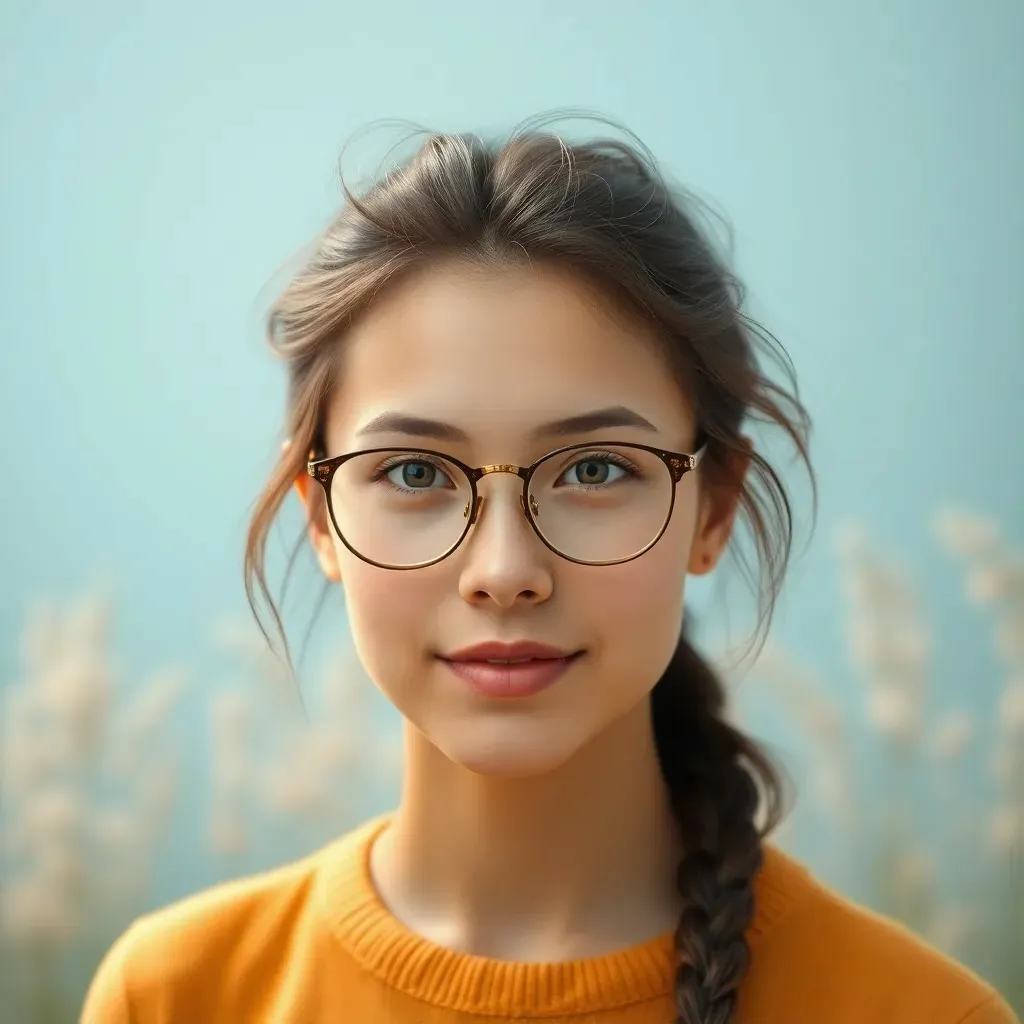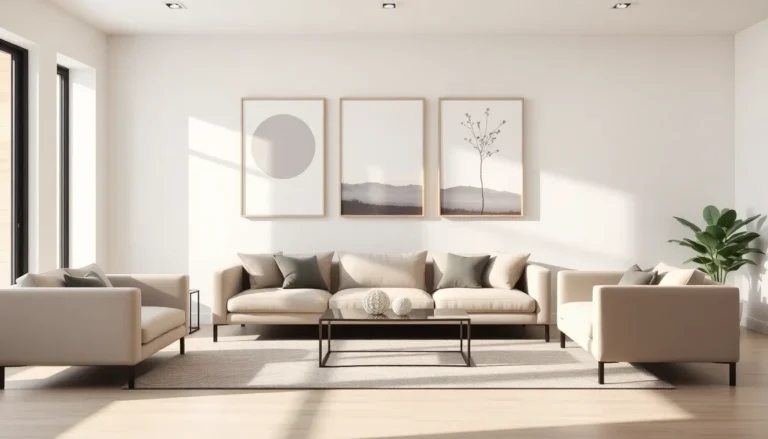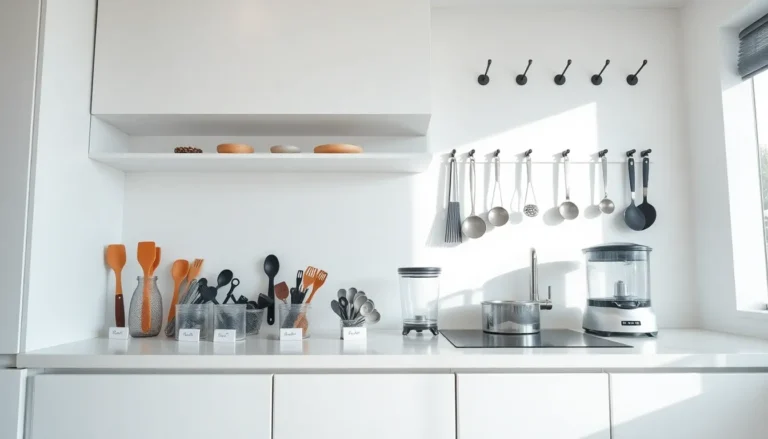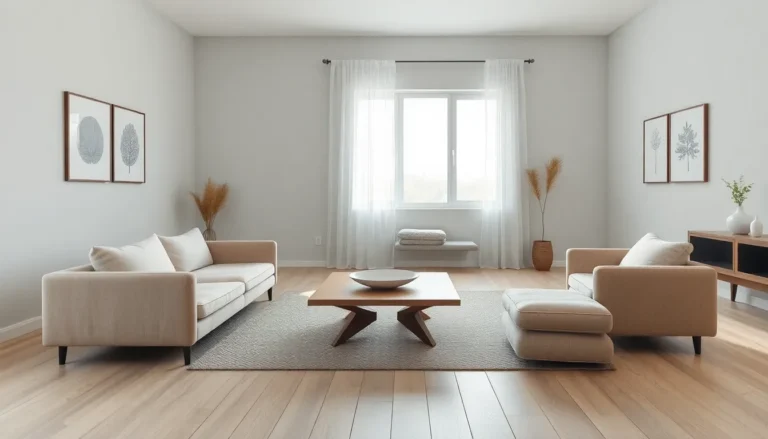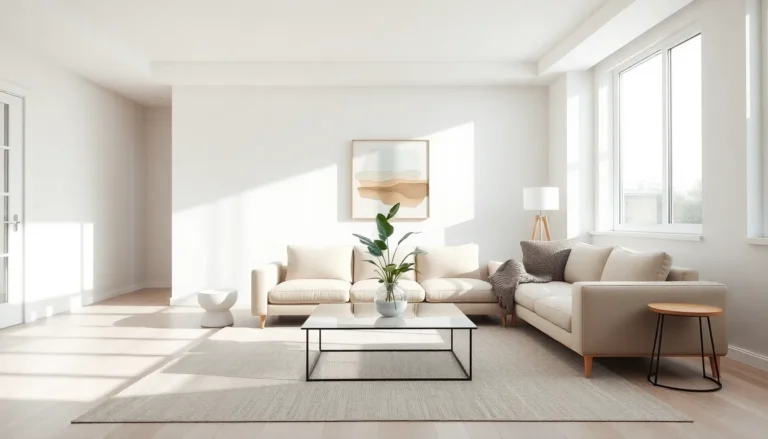Are you ready to transform your living room from drab to fab, without very costly? Minimalist wall art might just be the secret ingredient you need. Picture this: a calming, uncluttered space filled with elegant designs that speak volumes with very few words. In this text, you’ll discover how minimalist art captures simplicity and sophistication all at once. So grab a cup of coffee and let’s jump into the world of minimalist wall art that not only decorates but enhances your living space.
Table of Contents
ToggleUnderstanding Minimalism in Art

The Aesthetic of Minimalist Design
Minimalism in art emphasizes simplicity and clarity. This art form often strips away the excess, focusing instead on fundamental features. Images commonly showcase sparse compositions, using a limited color palette and straightforward forms. When it comes to the living room, minimalist wall art creates a breathtaking focus, drawing all attention effortlessly.
Key Characteristics of Minimalist Art
Several traits make minimalist art stand out. First, it often utilizes geometric forms. Secondly, there’s a penchant for monochromatic or neutral color schemes that are pleasing to the eye. Finally, the emphasis on space allows each artwork to breathe. These characteristics combine harmoniously to create a visual narrative that’s rich without being overwhelming.
Benefits of Minimalist Wall Art in Living Spaces
Creating a Calm Environment
One of the prime benefits of minimalist wall art is its ability to foster tranquility. In a world where life can feel chaotic, having soothing artworks on display can provide much-needed solace. These pieces encourage a sense of peace, allowing one to unwind after a long day.
Enhancing Space Perception
Minimalist art also works wonders in enhancing the perception of space. By using simple forms and light colors, these pieces create an illusion of larger, more open areas. This is especially beneficial in smaller living rooms where every square foot counts. Suddenly, that cozy nook feels spacious and inviting.
Selecting the Right Minimalist Art
Choosing the Right Color Palette
When selecting minimalist art, color plays a pivotal role. Opting for soft, muted tones can create a serene ambiance, while bold accents may add a lively touch. It’s essential to consider how these colors interact with existing furnishings. The right palette not only enhances the artwork but also ties the entire room together beautifully.
Understanding Scale and Proportion
Scale and proportion are equally important in choosing artwork. A small piece can get lost on a vast wall, while an oversized art piece can overwhelm a tiny corner. Striking the right balance ensures that each work complements the overall aesthetic of the living room, achieving harmony without fuss.
Popular Minimalist Wall Art Ideas
Geometric Shapes and Patterns
Geometric shapes are a staple in minimalist design. They serve as a creative expression without the clutter. Art featuring circles, triangles, and lines can draw the eye in unique directions, creating an engaging visual pathway across the wall.
Nature-Inspired Minimalism
Another trend gaining ground is nature-inspired minimalist art. Imagine a serene landscape reduced to its essential outlines or a delicate plant rendered in simple lines. These pieces evoke feelings of calm and connect the indoors with the tranquility of nature.
How to Arrange Minimalist Art in Your Living Room
Gallery Walls vs. Single Pieces
When it comes to arrangement, there are two popular methods: gallery walls and single feature pieces. Gallery walls can make a stunning statement, offering a dynamic mix of shapes and sizes. On the other hand, a single piece can serve as a focal point, making a strong impact with simplicity. Deciding on the approach depends on personal style and the space available.
Creating Balance and Contrast
Achieving balance and contrast enhances the overall appeal of the arrangement. Pairing different sizes and textures can create visual interest without overcrowding the space. A minimalist piece adjacent to a more textured item can create stunning contrasts that ignite conversation.


